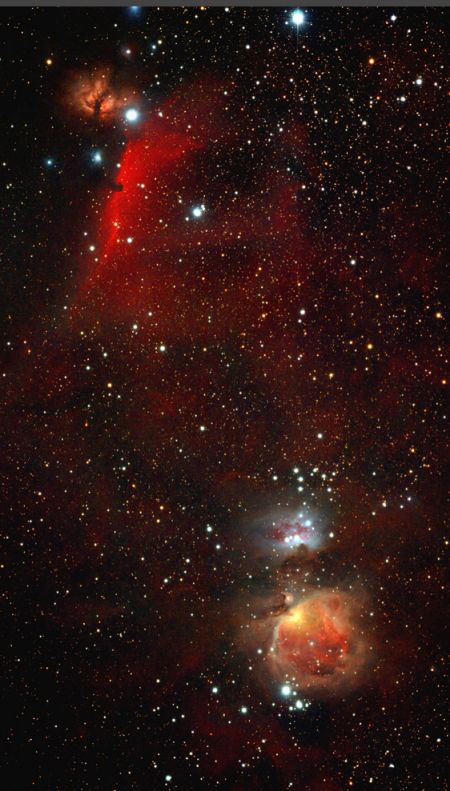Astronomy Picture of the Day
Discover the cosmos! Each day a different image or photograph of our fascinating universe is featured, along with a brief explanation written by a professional astronomer.

Credit & Copyright: Emmanuel Mallart |
Explanation: Adrift 1,500 light-years away in one of the night sky's most recognizable constellations, the glowing Orion Nebula and the dark Horsehead Nebula are contrasting cosmic vistas. They both appear in this stunning composite color photograph along with other nebulosities as part of the giant Orion Molecular Cloud complex, itself hundreds of light-years across. The magnificent Orion Nebula (aka M42) lies at the bottom of the image. This emission nebula's bright central regions were captured on fast film in a relatively short 30 second exposure. Above M42 are a cluster of prominent bluish reflection nebulae and fainter reddish emission nebulae recorded in additional exposures lasting up to 40 minutes. The Horsehead appears as a dark nebula, a small silhouette notched against the long red glow at the upper left. Alnitak is the easternmost star in Orion's belt and is seen as the brightest star above the Horsehead. Immediately to Alnitak's left is the Flame Nebula, with clouds of bright emission and dramatic dark dust lanes. The telescopic exposures were made from a site in the Southern French Alps at an altitude of 2,800 meters (a little closer to the stars!) in September of 2001. |
< | Archive | Index | Search | Calendar | Glossary | Education | About APOD | >
Authors & editors:
Robert Nemiroff
(MTU) &
Jerry Bonnell (USRA)
NASA Technical Rep.:
Jay Norris.
Specific rights apply.
A service of:
LHEA at
NASA/
GSFC
&
Michigan Tech. U.